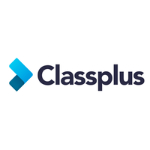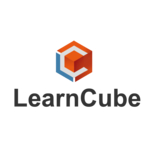List of Best Teaching Software
Showing 10 of 15 productsBigBlueButton is a and innovative virtual classroom software designed to enhance online learning experiences. With its robust features and seamless integration, BigBlueButton offers a dynamic platform for educators and students to collaborate, engage...Read BigBlueButton Reviews
Agora.io is a dynamic and innovative platform that enables seamless communication and collaboration through real-time engagement tools. This advanced network empowers businesses and organizations of all sizes to connect and interact with their audien...Read Agora.io Reviews
Samba Live, the innovative virtual communication software designed to enhance collaboration and engagement for teams and businesses. With seamless audio and video conferencing, real-time document sharing and interactive features, Samba Live makes rem...Read Samba Live Reviews
Electa LMS is an innovative learning management system that provides a user-friendly platform for both educators and learners. With a focus on simplicity and efficiency, Electa LMS offers a variety of tools and features to create and manage online co...Read Electa LMS Reviews
Classplus is a software platform that brings a modern twist to the traditional classroom setting. With its user-friendly interface and innovative features, Classplus provides a seamless experience for both educators and students. Say goodbye to the h...Read Classplus Reviews
WizIQ LMS is a and user-friendly learning management system designed to help educators and organizations create, manage, and deliver online courses. With its advanced features interface, WizIQ LMS revolutionizes the way distance learning is conducted...Read WizIQ LMS Reviews
EduGyaan is a educational software designed to enhance students learning experience. Packed with interactive features and user-friendly interface, EduGyaan is set to transform the traditional ways of learning. With its diverse content and personalize...Read EduGyaan Reviews
LearnCube is a virtual classroom software that allows for interactive and seamless online learning experiences. With its innovative features and user-friendly interface, LearnCube is changing the way education is delivered. Join the thousands of educ...Read LearnCube Reviews
ClassPoint is a dynamic presentation software designed to enhance the teaching and learning experience. With its unique features and user-friendly interface, it enables educators and students to collaborate and engage in a seamless and interactive wa...Read ClassPoint Reviews
AhaSlides is a presentation tool designed to elevate your presentations and engage your audience. With its user-friendly interface, interactive features and seamless collaboration capabilities, AhaSlides takes presentations to a whole new level. Say...Read AhaSlides Reviews
- What Is Teaching Software?
- Top Reasons Why Businesses Need Teaching Software?
- What Are the Top Key Features of Teaching Software?
- What Are the Top Benefits of Teaching Software?
- What Are the Steps to Choose the Right Teaching Software?
- What Are the Types of Teaching Software for Different Industries?
- What Are the Technology Trends for Best Teaching Software?
- What Are the Deployment Options for Teaching Software?
What Is Teaching Software?
Teaching software is software that is designed to aid in the process of teaching and learning. Exams, online courses, tutorials, demo projects, and interactive simulations are also possible. Online teaching software can aid in the creation of a real-time environment in which students and teachers can interact.
It is frequently used in the classroom to provide students with access to visual, interactive, and multimedia learning materials in a virtual environment. Remote teaching tools can aid learning in a variety of ways. It can automate monotonous and time-consuming procedures, provide a collaborative learning environment, and motivate students to learn more effectively.
It can give visual and aural teaching elements to help students understand subjects better. It can also be used to monitor and evaluate student performance and competence levels, allowing instructors to track students' progress throughout the course.
Online teaching software can let teachers spend less time objectifying and grading pupils, leaving more time for engagement and teaching. It is vital to distinguish between teaching software and educational software, which is designed to provide a more in-depth and educational experience.
Remote teaching software, on the other hand, can be used to build an effective teaching environment with a variety of materials to enable improved teaching and learning.
Top Reasons Why Businesses Need Teaching Software?
1. Improvement of student engagement: Software enables interactive and engaging learning experiences, which can keep students interested and engaged in their studies.
2. Improved collaboration: Online teaching software allows students to share their thoughts in real time and encourages cooperation between the instructor and students.
3. Content creation: Software makes it simple to develop and manage digital content for use in the classroom, such as lesson plans, videos, and other materials.
4. Standardized assessment: To achieve consistent results, software helps instructors to precisely evaluate student progress and test results.
5. Course management: Teachers may quickly establish, manage, and track classes using software.
6. Time management: Attendance, grading, and assignment management are examples of chores that can be automated using software.
7. Professional development: In the form of lessons and online resources, software enables educators to gain continuing support and professional growth.
8. Adaptive technology: To optimize progress, adaptive software can monitor and adjust educational content based on the learner's level of understanding.
9. Improved communication: Software allows instructors to communicate with their students and monitor their progress.
10. Learning analytics: Teachers can use software to collect and analyze data in order to better understand student behavior and suggest areas for development.
11. Increased accessibility: Software removes physical barriers, allowing instructors to collaborate with students in different regions, time zones, or even abroad.
12. Feedback: Software can be used to provide feedback and progress reports to both students and teachers, ensuring that everyone is making progress.
13. Multi-device ready: Students can get instructions on the move by using software that is accessible from many platforms such as PCs, smartphones, and tablets.
14. Podcasts: Podcast lessons can be created and distributed using software, reaching a larger audience than the traditional classroom.
15. Games: To enliven courses and encourage students to participate, software can be utilised to create interactive, gamified learning experiences.
What Are the Top Key Features of Teaching Software?
1. Online Presentations: The teaching software allows you to create engaging and dynamic slides for delivering lessons and course content.
2. Assessments & Quizzes: Teachers can use virtual teaching software to generate and give exams and quizzes to track their students' understanding and progress.
3. Assignment Submission: Students can submit assignments straight from the software, allowing teachers to swiftly review and provide feedback.
4. Virtual Classrooms: Teachers may simply construct virtual classrooms in which to provide live lectures and interact with their students in real time.
5. Grading & Tracking: Teachers can quickly see, grade, and track student progress over time.
6. Gamification: To engage students and stimulate learning, remote teaching software includes the use of interactive components such as badges, leaderboards, and awards.
7. Video Conferencing: Teachers can use video conferencing to engage with their students, allowing for more intimate and engaging learning experiences.
8. Student Engagement & Collaboration: Through discussion boards, online chats, and group work sessions, the program encourages student engagement and collaboration.
What Are the Top Benefits of Teaching Software?
1. Improved Learning Effectiveness: Students can analyze and interact with knowledge in a fun way thanks to remote teaching software. This boosts student interest and fact retention, which improves the learning experience's effectiveness.
2. Reduced Teacher Preparation Time: Virtual teaching software makes it easier for teachers to prepare educational materials. This drastically minimizes the amount of time teachers must devote to developing interesting modules and activities for their pupils.
3. Increased Collaboration: Teaching software promotes peer collaboration by allowing students to share and discuss their ideas in a fun and friendly online environment.
4. Easy Accessibility: Accessing educational content from any device, at any time, and from any location is made easier by remote teaching tools.
5. Enhanced Outcomes: Teachers can create learning experiences for their students using online teaching software, allowing them to learn at their own speed and progress based on their own skills and abilities.
6. Improved Communication: Teaching software bridges the communication gap between teachers and students by providing a venue for both to discuss and debate subjects connected to what they are learning.
7. Greater Interactivity: Remote teaching tools include a variety of interactive technologies that can be used to make learning more interesting and enjoyable. Quizzes, riddles, and games that encourage learning are examples of such activities.
8. Increased Efficiency: With modules and activities saved in one place and accessible at any time, teaching software provides for more effective class planning and delivery. This removes the need for manual data entry or duplicate content.
9. Reduced Errors: Teachers can use virtual teaching software to swiftly identify and correct problems in the classroom, providing students with fast feedback and boosting the learning process.
10. Improved Assessment: Teachers can use remote teaching tools to rapidly and effectively analyze students' learning progress and requirements, allowing them to alter their techniques for better results.
What Are the Steps to Choose the Right Teaching Software?
1. Consider your students’ computer literacy levels and needs: It is critical to select remote teaching software that is simple to use and takes into account your students' particular needs.
2. Evaluate the availability and quality of content and resources: Make certain that the best teaching software you are considering offers the appropriate content and resources for your particular class.
3. Evaluate compatibility with existing school systems: The remote teaching tools you choose should be able to interface with your school's existing infrastructure, making it simple to access and utilize.
4. Check technical support and customer service: Ensure that the company has courteous and skilled technical support employees.
5. Determine ease of access for students: Some virtual teaching software necessitates a separate login, but others are accessible simply from a school's website.
6. Investigate user feedback: Read reviews of the best teaching software on relevant websites to get a sense of what others have thought of the program.
7. Consider pricing: Make certain that the remote teaching tools you select are within your budget.
8. Test it out: If the vendor offers a free demo, use it to test the program to ensure it fits all of your requirements.
What Are the Types of Teaching Software for Different Industries?
1. Academic Education: Remote teaching software can be used to examine curriculum topics, produce assignments and assessments, and give online courses while teaching in academic disciplines. Pearson MyLab, Blackboard Learn, Moodle, and McGraw-Hill Connect are a few examples.
2. Corporate Training: Corporate training software is used to teach new skills to employees. Skillsoft, iSpring Suite, and Mindflash are a few examples.
3. Online Courses: Almost any subject can be taught using online course software. Udemy, Coursera, and Teachable are some popular examples.
4. Healthcare Education: Healthcare software is used to instruct people in various healthcare topics and abilities. HealthStream, NuVoxxLearn, and Enli Core are a few examples.
5. Language Learning: Language learning software assists pupils in learning foreign languages. Rosetta Stone, Duolingo, and Busuu are a few examples.
What Are the Technology Trends for Best Teaching Software?
Engaging web-based learning modules, interactive lessons on mobile devices, virtual classrooms, automated assessments, predictive analytics, and artificial intelligence are among the best teaching software technology advances.
Teachers can offer content utilizing interactive features such as multimedia applications, self-paced classes, and language learning programs by employing engaging web-based learning modules.
Interactive lessons on mobile devices can provide students with interesting video-based training, rapid feedback, and contextual tips to help them grasp and remember the material. Virtual classrooms provide several chances for professors and students to collaborate and study together in a virtual setting.
Asynchronous collaboration, multi-way audio, polls, and chat functionalities are some of the characteristics that contribute to the success of virtual learning. Teachers can use automated assessments to swiftly score tests and provide feedback to students so they can improve their grasp of the content.
Teachers can also effortlessly differentiate lessons for distinct learners with the use of automated assessment. Predictive analytics predicts how a student will perform on future assessments using data from previous assessments and activities.
Finally, artificial intelligence can be employed considerably faster than humans to spot trends in student data, provide personalized feedback, and assess student achievement. AI can help automate routine chores like grading and providing real-time feedback. During class, this allows professors to concentrate on teaching and offering useful guidance to pupils.
What Are the Deployment Options for Teaching Software?
The deployment options for the best Teaching Software include:
1. On-premise – This is frequently the most expensive choice because it includes installing the teaching software on on-site computer servers. This allows for safe access control and data management, but it must be updated and maintained on-site.
2. Cloud-based – This term refers to hosted instructional software applications that are accessible via the Internet. Because these applications are hosted in the cloud, on-site resources are not required. They are typically less expensive than on-premise alternatives.
3. Hybrid – This combines the advantages of on-premise and cloud-based deployment choices. It makes use of cloud-based applications and technologies while simultaneously storing data locally.










